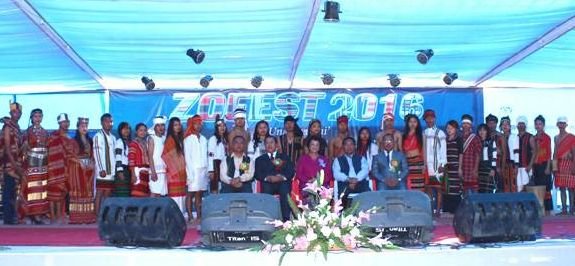The Chief Minister of Mizoram, Lal Thanhawla said there was a need to strengthen the bonds between the Zo brethren in Mizoram and Myanmar at the concluding ceremony of the three-day Zofest, 6-8 December 2016 at the border village of Zokhawthar, near the Indo-Myanmar border in Champhai district.
The Centre had agreed to the Mizoram government’s request to build four new bridges across the Indo-Myanmar border, he said, expressing the hope that the ongoing World Bank-funded project to widen Champhai-Zokhawthar road would eventually make inroads into Falam and Tiddim (Myanmar).
“We lost land in the west on the Indo-Bangladesh border. But we will never support fencing of the Indo-Myanmar border due to our close ties with our brothers living in the neighbouring country,” he said.
Elaborating on how the government of Mizoram always provided shelter to Zo ethnic groups whenever there were ethnic flare-ups, CM Hawla called on the Zo tribe to coexist and strengthen their bonds of friendship and brotherhood.
The festival, organized by the Mizo Zirlai Pawl (MZP), a students’ body, was aimed at bringing the different extended Zo brethren or Zo hnahthlak spread across India, Bangladesh and Myanmar closer and was directed towards strengthening the unity and friendship of the various tribes.
The Telegraph highlighted that CM Hawla said the Zo people were one of the worst sufferers of the British policy of divide and rule and the extended Zo brethren had been divided across three countries and even within the country across Mizoram, Manipur, Tripura and Assam. “But despite this sad fact, we are blood brothers and this division cannot change our relationships,” he said.
Over 1,000 delegates congregated at Zokhawthar from Mizoram, Manipur, Assam, Tripura, Bangladesh and Myanmar. The festival also showcased a costume parade of 19 ethnic Zo tribes such as Lusei, Mara, Lai, Pang, Bawm, Thadou-Kuki, Chin, Malsawm, Ranglong, Hrangkhawl, Vaiphei, Zomi, Hmar, Biate and others.


